Click to Skip Ahead
Budgies and Parakeets are two of the smallest species of parrots and in the wild, are found in the drier parts of Australia. These birds are highly social animals that live primarily in flocks in nature and should ideally be kept in pairs in captivity too. They have been bred by humans since the early 19th century, and due to their affectionate nature and ease of care, they have become exceedingly popular pets.
However, there is a great deal of confusion for would-be bird owners when the option of a Budgie or Parakeet comes up. What are the differences, if any, between these two small parrots?
A Budgie, or Budgerigar, is actually just another term for a specific type of Parakeet. The two birds are actually one and the same. But it’s only in the U.S. that the two terms are used interchangeably. So, while all Budgies are Parakeets, not all Parakeets are Budgies. Are you confused? Don’t worry; in this article, we cover all the differences between the two and address where the confusion comes from. Let’s get started!

Visual Differences
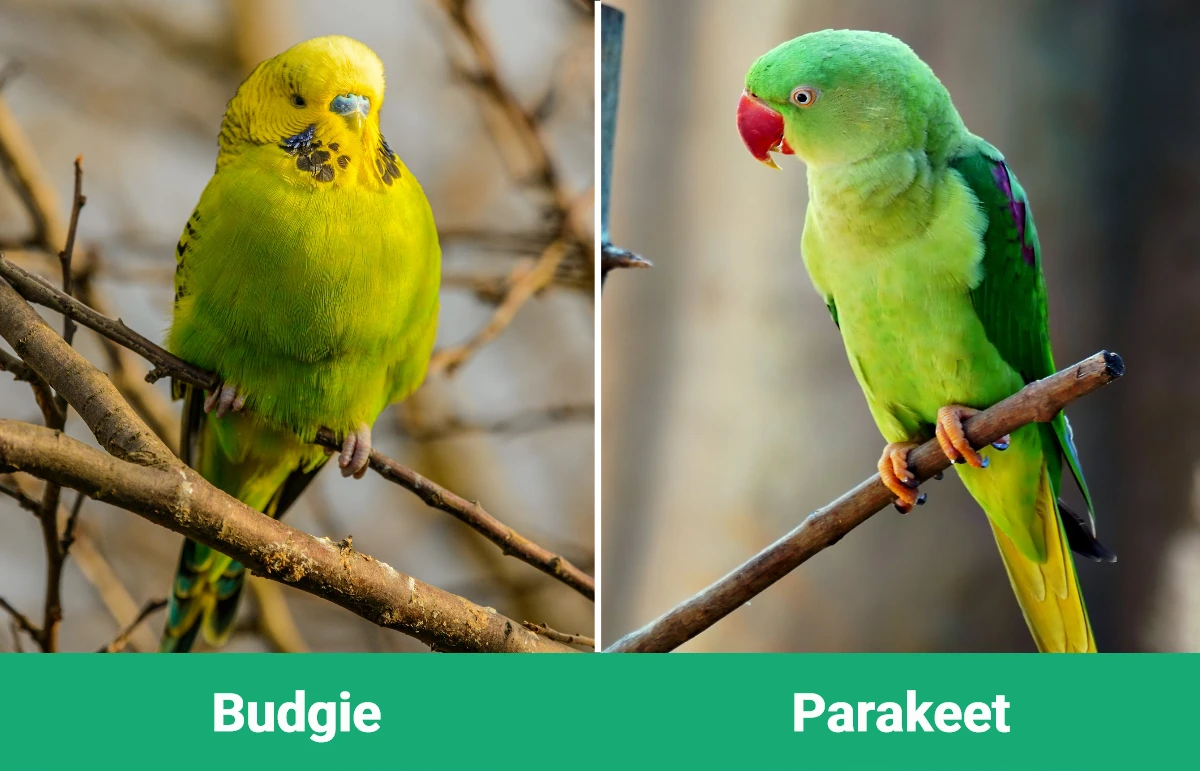
At a Glance
- Average height (adult): 5–7 inches
- Average weight (adult): 30–40 grams
- Lifespan: 5–10 years
- Exercise: 20–30 minutes a day
- Grooming needs: Low
- Family-friendly: Yes
- Other pet-friendly: Often
- Trainability: Highly intelligent and easy to train
- Average height (adult): 5–18 inches
- Average weight (adult): 30–50 grams
- Lifespan: 10–20 years
- Exercise: 20–40 minutes per day
- Grooming needs: Low to moderate
- Family-friendly: Yes
- Other pet-friendly: Mostly
- Trainability: Intelligent, affectionate, and a breeze to train

Budgie Overview
Budgies are often referred to by bird enthusiasts as beginner birds, as their small size, low-maintenance needs, and intelligent nature make them easier to keep than most other parrot species. They are beautiful, long-tailed birds that live in small flocks in the wild, and as such, they should at least be kept in pairs when in captivity. Aviaries are ideal for Budgies, but large enough cages outfitted with all the necessary accessories are fine too.
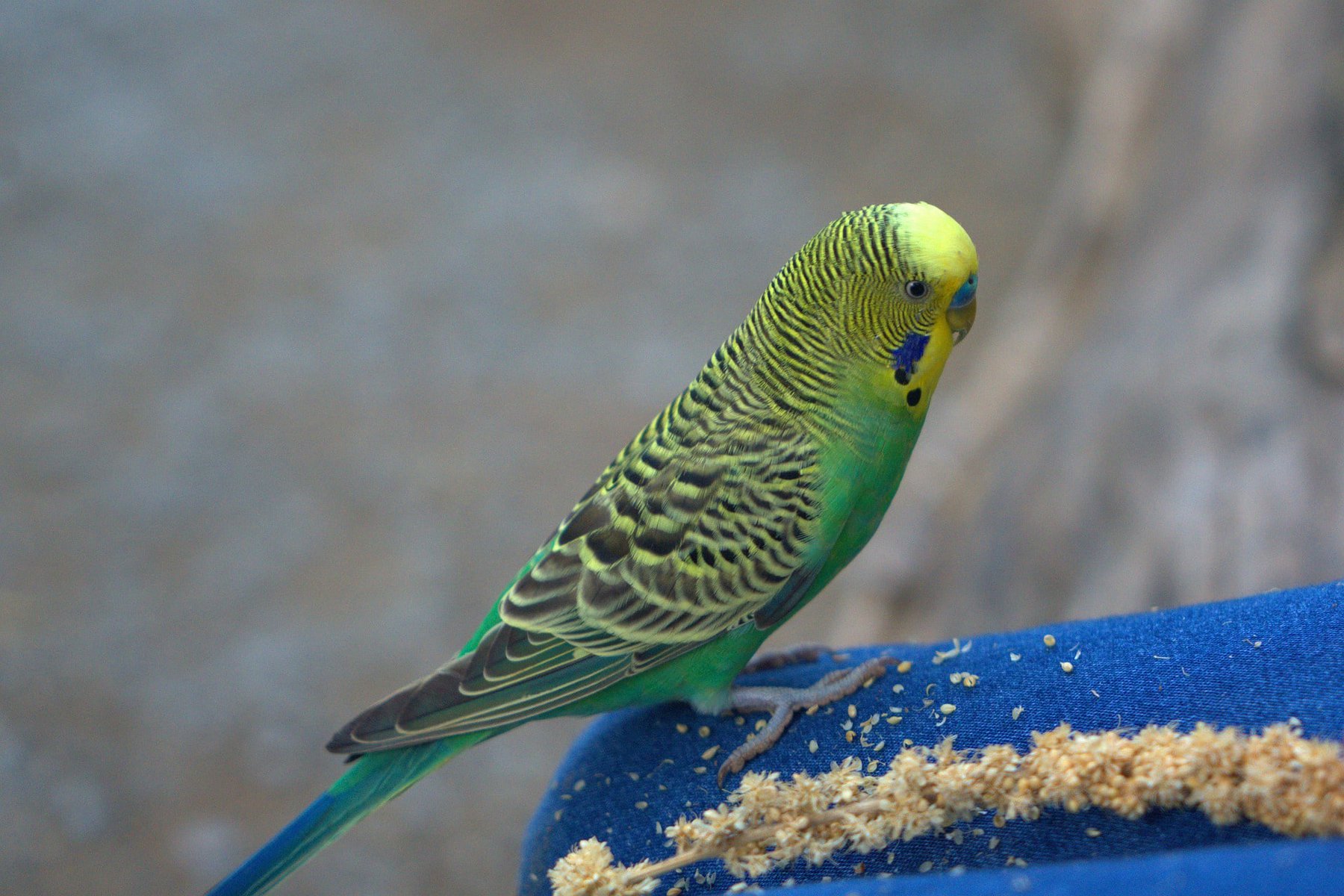
Personality / Character
Budgies are playful, lively, and curious animals that make wonderful companions. Although they are small, they are full of fun and brimming with personality, and it’s surprising how much character is packed into their tiny bodies. They are gentle birds that are great with children and much quieter than other species of parrot, though they are still capable of making plenty of noise should they wish! While all Budgies are unique individuals, there is one characteristic that all Budgie owners will attest to: They are exceedingly interested in everything that is going on around them.
Training
Budgies are highly intelligent birds that are easy to train and are affectionate when handled from a young age. That said, if Budgies are kept in pairs or a colony in a large cage or aviary, they do not need much human interaction and are great as “observing only” pets too. Still, training a Budgie is typically a breeze, and contrary to popular belief, they are capable of a massive vocabulary rivaling that of some of the largest and most well-known parrot species. Males are generally the best at mimicking speech, but females are quite talented too.
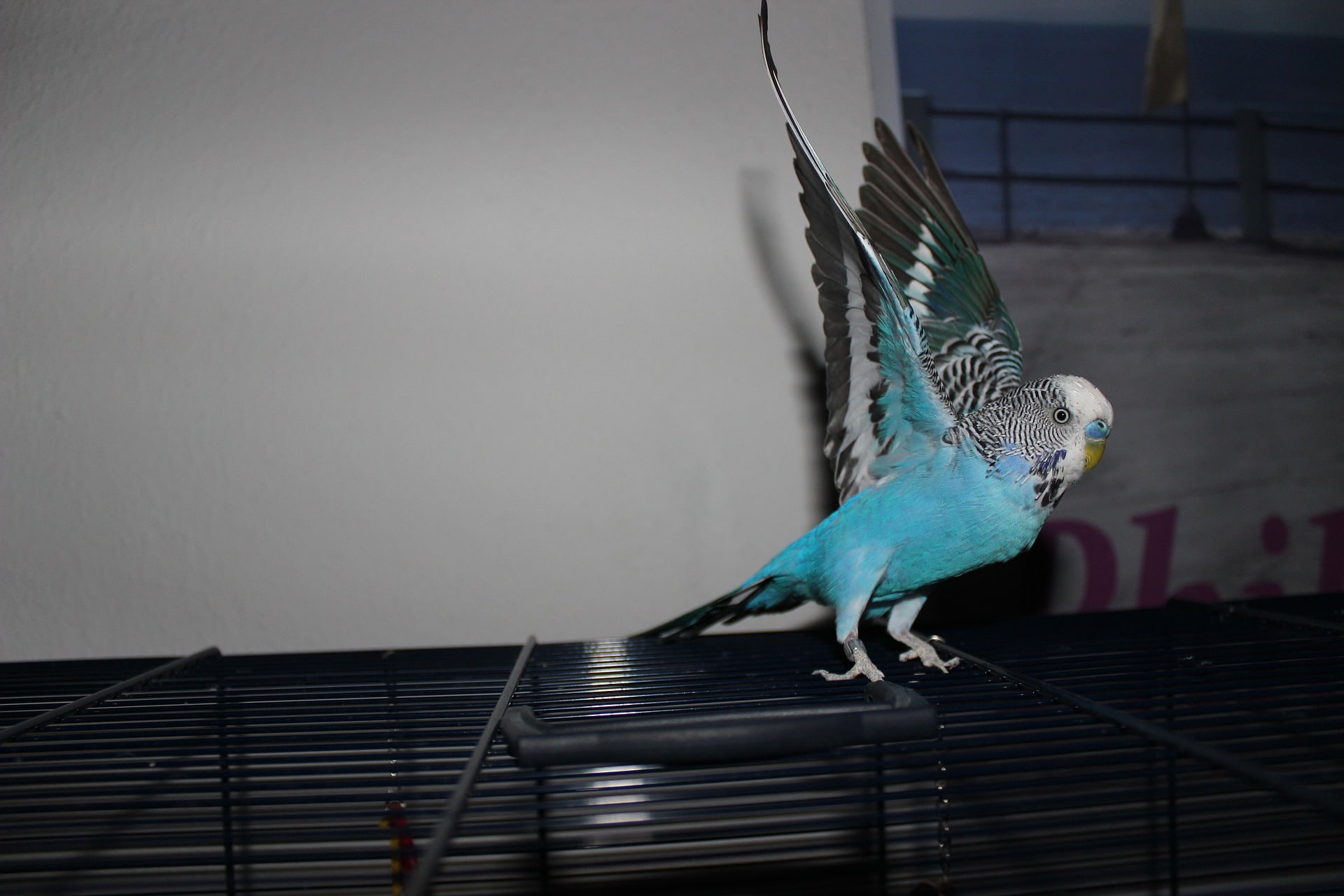
Health & Care
While Budgies are small and easy to care for, they still need just as much love and attention as any other pet bird in order to live a happy and healthy life. Make sure they have a healthy and varied diet—not just seeds— and constant access to clean, fresh water and plenty of mental and physical stimulation. They’ll need a large, spacious cage to fly around in, one that is equipped with toys, perches, and a bath. Budgies love to splash in the water to keep themselves clean. They are also social animals that are best kept in pairs or larger groups.
Suitability
Due to their relative ease of care and small size, Budgies make ideal pets for beginner bird enthusiasts. If you’ve never had a bird before and are keen to bring one home as a pet, a Budgie is an ideal choice. That said, they can live for 10 years or more, so they are a large responsibility that should not be taken lightly.

Parakeet Overview
Parakeets are small to medium-sized birds with long, tapered tails that define the species. Larger parrot species have square-shaped tails and stockier bodies. Parakeets can be found in the wild almost all over the world, but the largest diversity of the species is found in Australia, where there are over 30 species of some of the most colorful Parakeets. While there are hundreds of different Parakeets found worldwide, they all have similar characteristics, including a long tail, bright and diverse coloring, and a multi-faceted beak. They are all naturally busy, active, and social creatures.
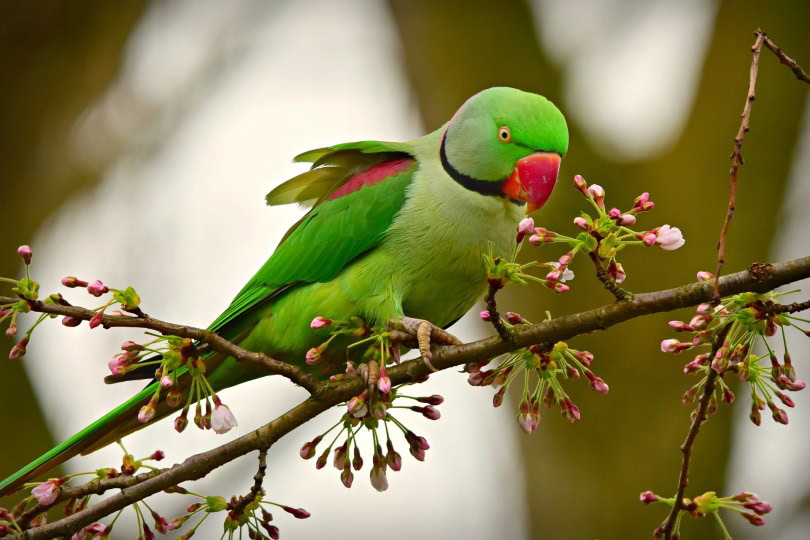
Personality / Character
Despite their smaller size, Parakeets have a ton of personality packed into their small frame and are certainly not lacking any of the personality or charisma of larger parrots. They are highly social and active little birds that adjust well to captivity, provided that they have a large enough cage and are tamed from an early age. Even when they are raised with other birds, which is recommended due to their social nature, they bond strongly with their owners and enjoy human interaction.
Training
Parakeets are intelligent birds that are easy to train and are notorious talkers. They have a remarkable ability to mimic speech, with some birds having an estimated vocabulary of over 1,500 words! While it may take time for your Parakeet to initially adjust to their new environment, they are usually tame within 2 weeks and will learn tricks and words soon after that. If you have more than one Parakeet, it’s best to train them separately for quicker results.
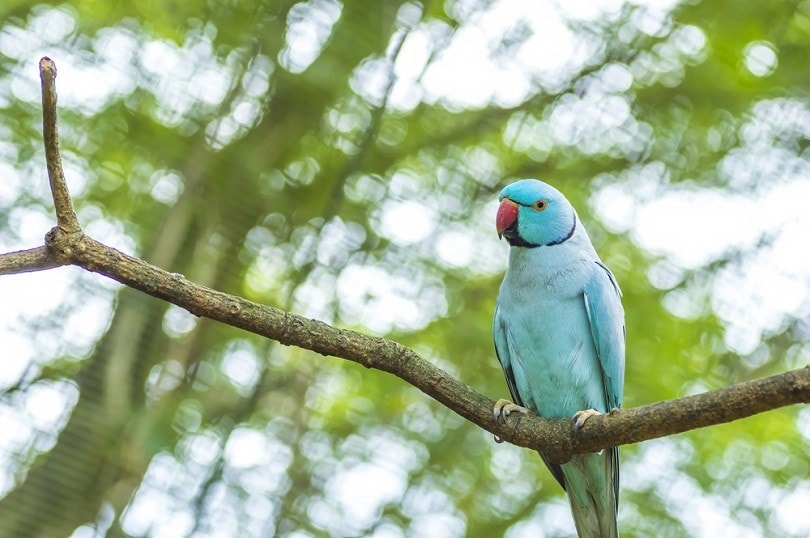
Health & Care
Parakeets are small birds that are certainly easier to care for than larger parrot species, but they still require a ton of attention, a clean and safe cage or aviary, and a healthy, varied diet of seeds and high-quality parrot pellets with occasional fruit treats. They’ll also need plenty of toys, perches, and ropes or ladders for adequate mental and physical stimulation and will love a small tub to bathe in and clean themselves.
Suitability
Parakeets are suitable as beginner birds but are slightly larger and require slightly more care and attention than Budgies. Still, they are easy to tame and highly affectionate, making them ideal pets for families with children or as companions for seniors. Compared to Budgies, Parakeets in general have longer lifespans, so they are a large responsibility and can be around for up to 20 years in captivity.

What’s the Difference? Budgie vs Parakeet
Budgies and Parakeets are essentially the same animals. A Budgie is just a species of Parakeet, of which there are hundreds around the world. The confusion comes with the name. In the U.S., they are known as Parakeets, while in the rest of the world, they are referred to as Budgies.
So, all Budgies are Parakeets, but not all Parakeets are Budgies, and there are many different species within the Parakeet family. All that said, the two are similar in character and personality and differ mostly in size and color. They are both highly intelligent, social, and affectionate birds that make great pets, and either choice is an ideal beginner pet for the blooming bird enthusiast!
- See also: Canary vs Parakeet
Featured Image Credit: Top – webandi, Pixabay | Bottom – Chaithanya Krishnan, Shutterstock
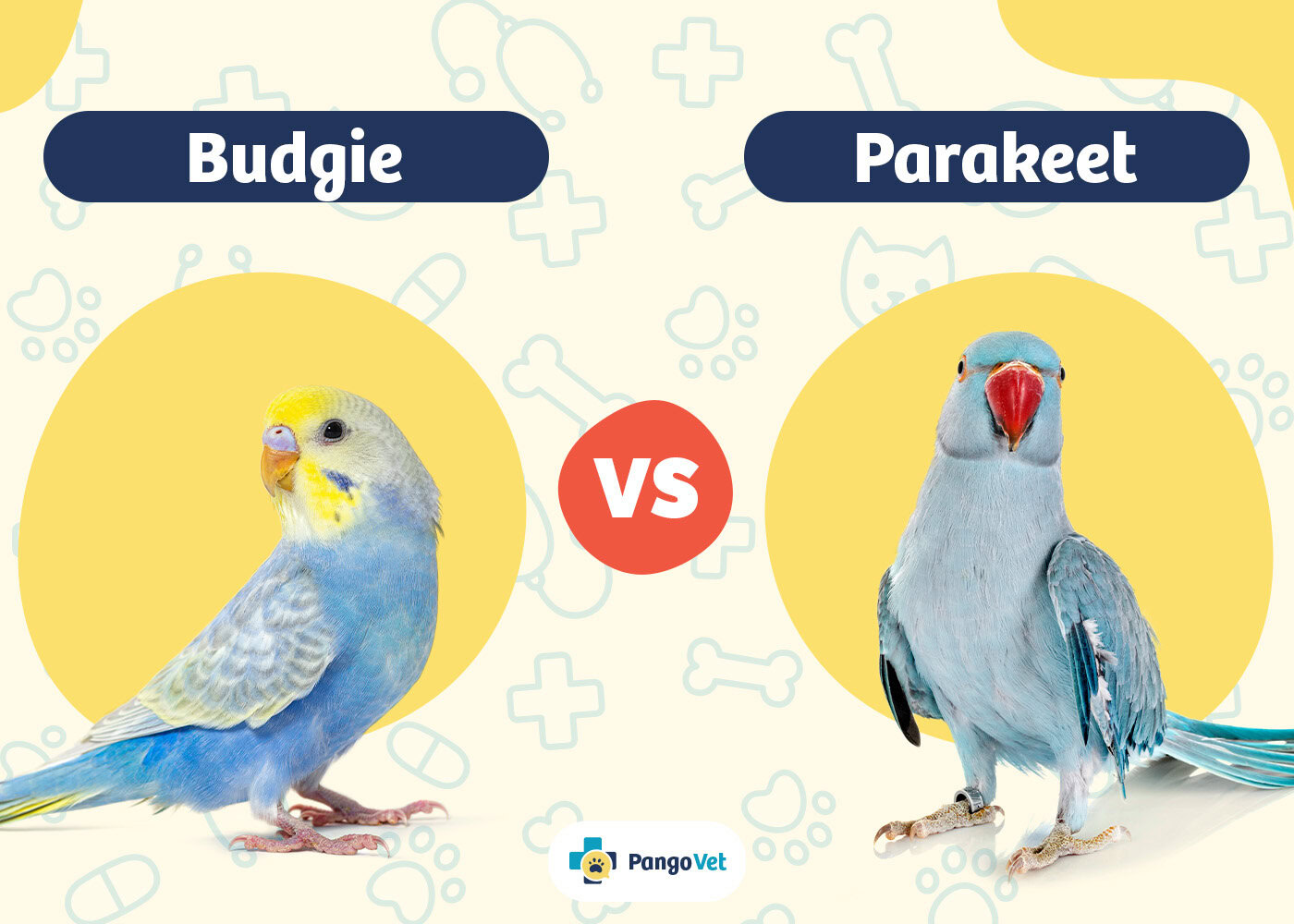







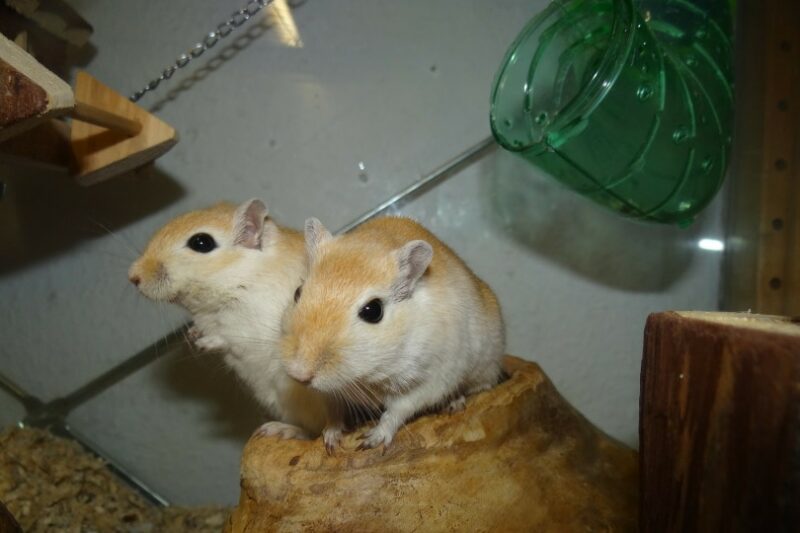


2 Responses
Hello, I am living in Japan I want to buy parakeet let me know if you have have for sale or other parrots
Hello Breshna,
thank you for your message. Unfortunately, PangoVet only provides the telehealth veterinary services. We don’t sell pets of any kind. Our best suggestion would be to search online for “Parakeet breeders in my area” or “Parakeet breeders in Japan”. This could give you a great starting point for your search.
Best of luck!